***BIG NEWS: Richard Hittleman’s classic TV series “Yoga For Health” Has been released on DVD! Check it out at www.richardhittleman.com ***
In part one of my review of Richard Hittleman’s Yoga 28 Day Exercise Plan, I covered the first two weeks of the plan. I gave an overview of how the book’s daily routines are presented. For part two, I’ll go over how Hittleman ramps it up a notch. I’ll also sum up a few of his “thoughts for the day”, which are his daily discussions on the many ways Hatha Yoga can benefit the mind and body.
Regarding the exercise portion of the plan, Hittleman takes it up a level for the remaining two weeks. Day 15 starts off with these words, “Today marks the beginning of the second half of our program. If we are to successfully complete our 28 day plan you must practice very seriously and carefully for the next 14 days. Do not allow anything else to take precedence over your daily practice”. He clearly means business here. No room for messing around!
Beginning on day 15 Hittleman suggests to practice more than once a day if time permits. For the previous two weeks, the reader/student was instructed not to practice more than once a day. Unfortunately, I often didn’t get a chance to practice more than once a day (except perhaps for a “lion’s pose” here and there while sitting at my computer… :P…get it?). Instead, when time permitted I occasionally did another type of exercise, such as brisk walking or using a stationary bike.
Richard Hittleman yoga 28 day plan – part 2
For the second half of the program, many postures are more advanced and focused. On days 17 through 23, the instruction concentrates on very specific areas of the body. On the other days, the poses remain varied. Also, the number of poses per day is greater, and the lengths of time to hold them are often longer.
The first two weeks of practice is designed to prepare the body to be able to handle the advanced practice of the 2nd two weeks. However, it is very important to pay heed to your limits.
There are still some poses I will not attempt, such as the headstand or the back push-up. Hittleman reminds the student that if you feel you cannot execute a pose, you can perform a less advanced position and hold it for longer. However, I would add that even milder versions of certain poses are still not suited for everyone.
Even after trying the modified headstand a couple of times, I started to feel strain on my neck. I decided it’s not a pose I am at all comfortable doing. So instead, I substituted all headstand related poses with the downward facing dog asana. He does not go over that pose in this book, but it is one I know and am comfortable with. It seems to be a decent substitute for me.
Remember to breathe
One criticism I have for the overall instruction is that there are not enough reminders to breathe.It may sound silly, but when you’re new to an exercise program and your focus is on performing everything correctly, it’s easy to forget to breathe properly. And breathing is such an important part of Hatha Yoga. So, I will remind you myself: if you follow Richard Hittleman’s Yoga 28 day program, don’t forget to breathe!
Thoughts for the day
Okay, now on to Hittleman’s yoga principles and philosophies. As I mentioned in part one of my review, at the end of each practice day there is a page called “thoughts for the day”. Here Hittleman touches upon various topics as they relate to yoga, such as health and nutrition. Of course these topics can fill up entire books on their own, but he does discuss the significance of considering these factors in your overall health plan.
Nutrition and yoga
As people age, they are often afflicted with illnesses and physical disorders that people generally attribute to a natural part of aging. But much of this “aging” is actually due to years of mistreating one’s own body. Hittleman suggests that one of the ways we mistreat our bodies is through poor nutrition.
Hittleman emphasizes that overeating as well as incorrect eating maybe be the true cause of many physical disorders. A diet filled with processed foods, meats, dairy, fats, and/or refined sugars, take a toll on the body, and can be outright toxic. Hittleman suggests reducing consumption of these so-called foods, and instead consuming natural, plant based foods. Making just this simple change can help regenerate the human body, provide increased energy, and impart many of the qualities of youth.
Hittleman explains that proteins from animal flesh and other animal products are low quality, and actually require more energy for digestion than they provide. Proteins derived from plant based sources such as nuts, legumes, and vegetables are more nutrient dense, are higher quality, and are more easily absorbed into the body.
Hittleman also suggests that poor nutrition can contribute to arthritis, especially the consumption of dairy and other foods high in fat. Based on his experience with his many students, he found that avoidance of such foods, as well as seriously performing certain yogic movements slowly and cautiously, can produce excellent results in the treatment of arthritis.
Other benefits of Yoga
Richard Hittleman suggests that performed properly and consistently, yoga can be used as a form of physical therapy. Of course, this should be done so with some guidance, especially with severe conditions. If you are in physical therapy, ask your therapist what postures are suggested for your particular condition. It can help speed up your healing, and reduce expensive PT costs!
Also among the book’s “thoughts for the day”, there are three separate segments on using yoga for weight management. In addition there’s a discussion about yoga’s effects on inner and outer beauty.
Yoga and smoking
One section I found especially interesting was his discussion on how smoking impacts yoga, and how yoga impacts smoking. Hittleman notes that smoking inhibits the benefits derived from yoga practice, besides of course inhibiting your general health. The bright side is that the practice of yoga often decreases the desire to smoke, and may even eliminate it entirely .
He adds that following the nutritional suggestions of his plan will actually reduce the smoker’s desire to light up. Coal, tar and nicotine might seem okay after consuming processed, devitalized foods, but cigarettes will be naturally less appealing if you are consuming a whole food, plant based diet.
Yoga and meditation
Finally, Hittleman talks a bit about meditation, and why and how to make it part of your daily routine. He defines meditation as “a profound state of quietude for the entire organism”. He suggests engaging in a brief meditation at the end of every practice, as well as whenever you feel the need of a renewal of energy.
Among his many books, Hittleman also wrote A Guide To Yoga Meditation, which is a comprehensive discussion of the various aspects of yogic philosophy and meditation. Although the book was published decades ago, it continues to be highly recommended today.
So, now that I’ve completed the 28 days, what’s next?
Finishing the 28 day plan is quite an achievement. But that isn’t the end all and be all. It would be unrealistic to expect an entire transformation of mind and body in just a month. However, I have to say definitely feel an increase in flexibility, in body tone, and in general strength. I don’t want to throw all that away now that I’m done with the 28 days.
The feeling of “Yay, I did it!”, along with the real progress made, should give anyone who completes the plan enough motivation and preparedness to continue with a regular yoga practice. But now that the 28 day instruction is over, where do you go from here?
Conveniently, at the end of the book Hittleman gives us three different practice routines to alternate from day to day. All of the positions are ones the reader/student had learned in the 28 day program, so it’s pretty easy to follow along and keep your practice going. If you’re not sure you’re performing the poses correctly, it might be worth talking some classes, and/or getting some input from a qualified teacher.
I really feel that Richard Hittleman’s Yoga 28 Day Exercise Plan is a great book, not only for beginners, but for those of us who want to be sure we practice a varied routine regularly. There is much evidence that keeping up a daily yoga practice can have enormous benefits and can help keep the body fit, flexible, and youthful. All the proof I need is my mom, Lee. She got started with Richard Hittlman’s yoga books and TV shows in the sixties. She’s kept it up ever since, and to this day she continues to wow people with her youthful energy and appearance.
It will be interesting to see how Richard Hittleman’s Yoga 28 Day Exercise Plan compares to Mandy Ingber’s Yogalosophy 28 Days to the Ultimate Mind-Body Makeover, which is next in my cue to check out. So, more on that soon. For now, namaste!
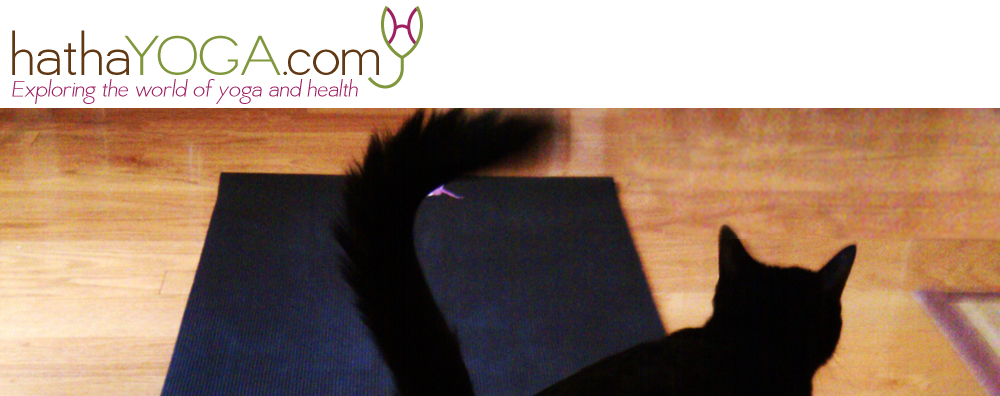
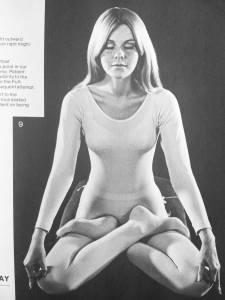
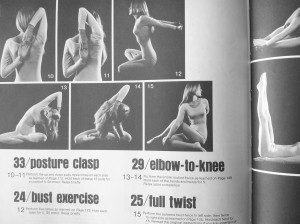
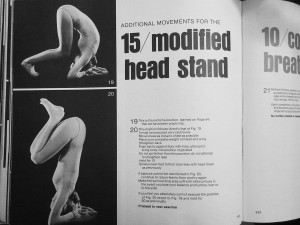
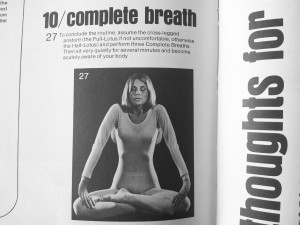


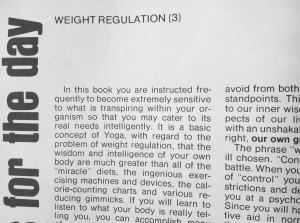
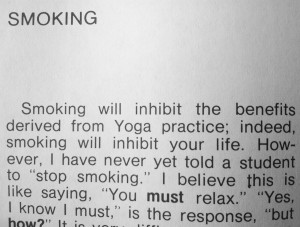
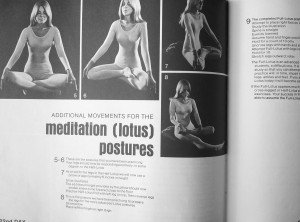
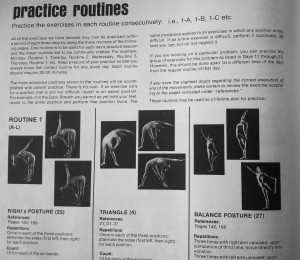
I started useing yoga via Hittlemans 28 day yoga back in 96′. I had to because I had 3 fractures in my vertebra (1 in the T12, & 2 in the L5) and having no knowledge of the condition. All I knew was it hurt severely and being a welder in construction it was the only thing that’d get me through it. I just recently had lots of work done to the L5-S1, too much to mention but it was a 3 hr surgery and implemented every procedure I’ve ever heard of. My reason in commenting is that after having that book for almost 20 years my x-girlfriend stole it knowing how important that book was/is to me, & as I’m waiting for a decision for disability I have no money to replace it. I could easily get by with just the order of the day’s& their exercises, day 1 day 2 day 3. I would greatly appreciate it if I could get that from you. Extremely grateful, and will buy another copy in months to come, and continue to promote the book to practically everyone I meet as I have since 96′! I need no other exercise than what is in that book. It is second in importantence only to the bible. Thank you for considering sending me the list, and God bless you if you or someone will
Hi Robert,
Wow, you certainly have been through a lot. Glad to hear Richard Hittleman’s teachings are helping. Since it could be a copyright infringement to send you copies of pages from his book, I would suggest you request the book from your local library network. I know ours has it. And when you are ready to buy it again, there are lots of used copies on Amazon for around $6 or $7 including shipping.
I hope this helps, Robert. Wishing you a speedy recovery and good health.
Namaste, ~Maria